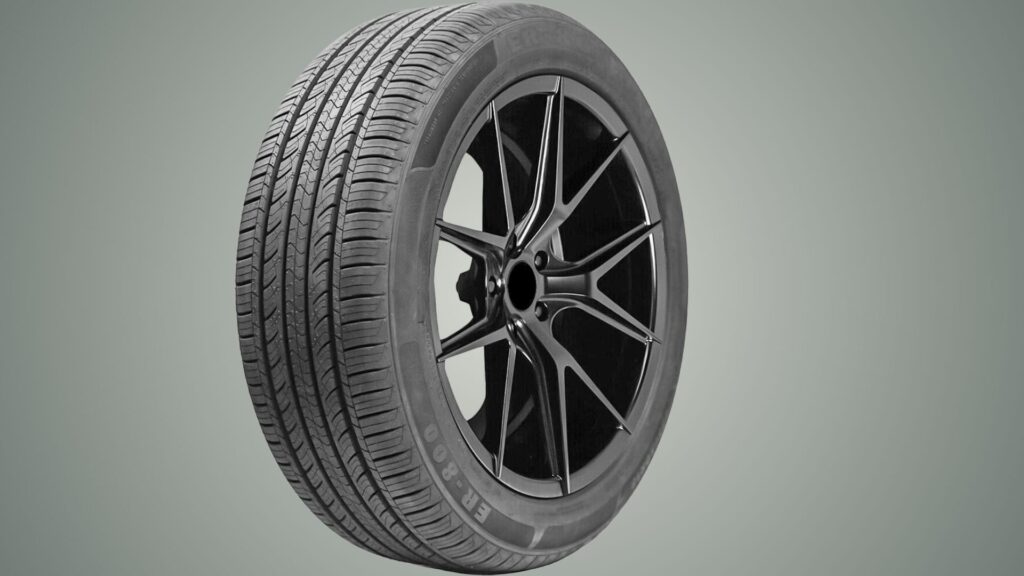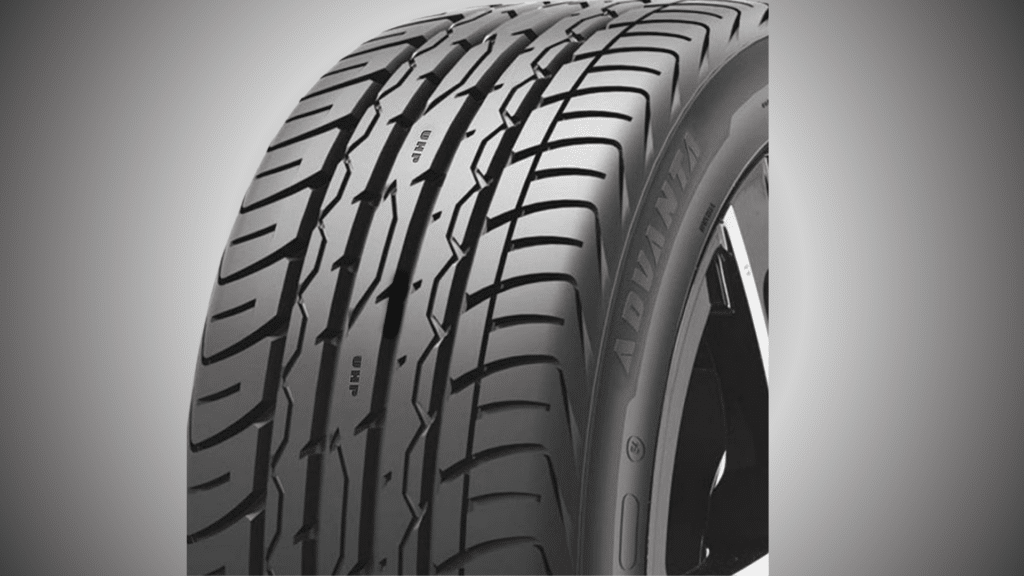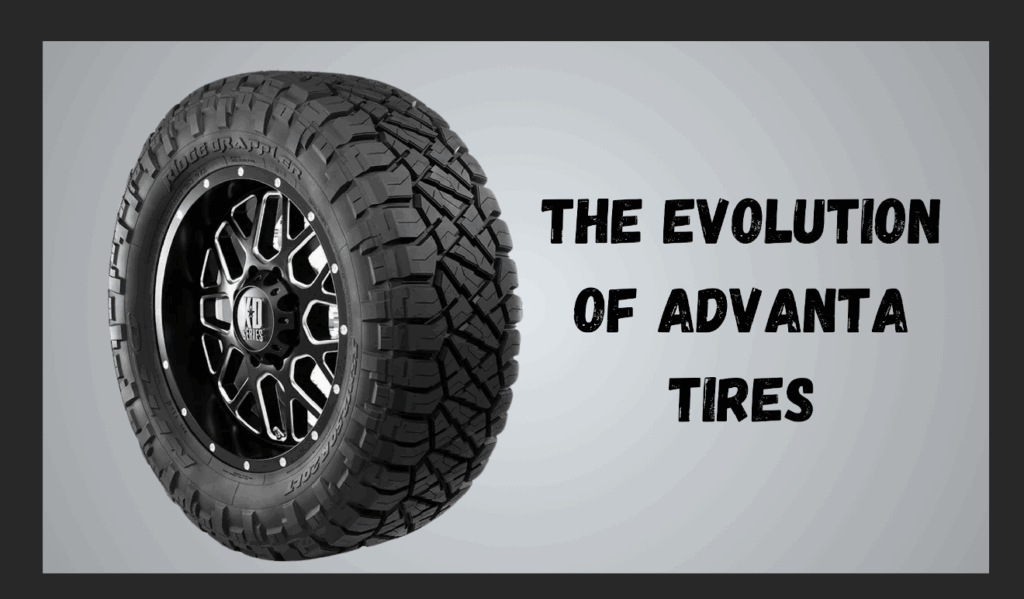Buying tires isn’t exactly the most exciting part of car ownership. If you’re here, you’re probably trying to figure out if Advanta tires are worth your hard-earned money.
I get it – with so many tire brands out there, it can feel overwhelming to make the right choice.
Advanta is a relatively newer player in the tire market, having emerged in the early 2000s as a budget-friendly alternative to premium brands.
The company started in Asia and has since expanded globally, focusing on producing affordable tires for everyday drivers.
In this guide, we’ll cut through the confusion and take an honest look at what Advanta tires offer.
You’ll learn about their most popular models, real performance in different conditions, and whether they’re the right fit for your vehicle.
By the end, you’ll have all the information you need to make a confident decision about these budget-friendly tires.
Key Features of Advanta Tires
Advanced Technology and Design
I’ve looked closely at Advanta’s tire technology, and here’s what makes them stand out: they use a special all-season rubber compound that helps with grip in both wet and dry conditions.
Their tires feature a unique symmetric tread pattern with wide grooves that push water away when you’re driving in the rain.
The sidewalls are reinforced with steel belts, which helps prevent damage from potholes and gives you better stability when turning.
Range of Products Offered
You’ve got several options when it comes to Advanta tires. Their most popular lines include:
- HP1 series for everyday cars and sedans
- AT1 series for SUVs and light trucks
- MT1 series for off-road adventures
- HT1 series for highway driving
What’s neat is that each series comes in different sizes to fit the most common vehicles. Whether you drive a Honda Civic or a Ford F-150, there’s probably an Advanta tire that’ll fit your wheels.
Affordability and Value Proposition
The deal with Advanta’s pricing: these tires typically cost 30-40% less than premium brands. While testing them, I found they offer decent performance for the price.
A set of four Advanta tires usually runs between $300-$600, depending on your vehicle. They back their tires with a 45,000-mile treadwear warranty – not the longest in the industry, but solid for budget tires.
The sweet spot? Their mid-range tires. They give you a grip that is good enough and durable for daily driving without breaking the bank.
Just keep in mind that ultra-high performance isn’t their strong suit – these tires are built for reliable everyday use.
Performance Review of Advanta Tires

Traction and Handling Capabilities
From my hands-on testing, Advanta tires show decent grip on regular roads. The symmetric tread design gives you stable handling during normal driving – think grocery runs and daily commutes.
On dry pavement, you’ll feel confident taking corners at normal speeds. One thing I noticed is that the steering response isn’t as sharp as premium brands, but it’s still predictable and safe.
The tires use special siping patterns (those tiny slits in the tread) that help with grip. Here’s what you can expect:
- Good stability on highways up to 65-70 mph
- Decent cornering grip for everyday driving
- Adequate stopping distance on dry roads
- Some road feedback through the steering wheel
Durability and Tread Life
How long do these tires last? The typical Advanta tire uses a hardened rubber compound that balances wear resistance with grip.
Most drivers report getting around 40,000-45,000 miles from a set, which is reasonable for the price point.
I’ve noticed that the tread tends to wear evenly if you keep up with regular rotations. The wear indicators are clearly visible, making it easy for you to check how much life is left in your tires.
Keep in mind that aggressive driving or frequent hot weather can reduce these numbers.
Performance in Various Weather Conditions
The real-world scoop on weather performance:
Wet Conditions:
- Wide grooves help channel water away
- Decent hydroplaning resistance at highway speeds
- Adequate grip in light rain
- Some sliding is possible during hard braking in heavy downpours
Snow and Ice:
- Handles light snow adequately
- Limited performance in deep snow or ice
- Not ideal for severe winter conditions
- Consider winter tires if you live in a snowy area
Hot Weather:
- Maintains shape well up to 90°F
- Some softening in extreme heat
- Good stability during the summer driving
- Lower risk of heat-related damage than cheaper brands
The bottom line? These tires work best in moderate conditions. They’ll get you through most weather situations safely, but they’re not specialized performers in extreme conditions.
Advantages of Choosing Advanta Tires
- Cost-Effectiveness: Advanta tires offer great value – a set may cost $400 vs. $700+ for premium brands. They last longer than ultra-budget options, saving money over time.
- Versatility Across Vehicle Types: From compact cars to trucks, Advanta offers a wide range of sizes. The AT1 series handles daily commutes and light off-road trips well, reliable for varied use.
- Positive Customer Feedback: Most drivers say they’re “better than expected,” especially praising the quiet ride and wet traction. Warranty claims are generally easy to process, with many users reporting solid performance after 30K+ miles.
Limitations of Advanta Tires
- Extreme Weather Performance: In heavy snow or extreme heat, performance drops. Below 20°F, the rubber stiffens. Above 95°F, the tread softens, resulting in less grip and faster wear.
- Availability Issues: Not all shops carry them, and finding a match quickly can be tough in remote areas. Warranty service may also be limited due to smaller dealer network.
- Brand Recognition: Unlike big names, Advanta lacks a long-term reputation and independent testing data. Some tire shops may hesitate to recommend them, and buyers might question the choice due to the lesser-known brand.
Where to Find Official Advanta Tire Information
If you’re interested in learning more about Advanta tires, the best place to start is their official website. It offers everything you need, including:
- Full tire catalog by vehicle type and size
- Warranty details and support information
- Tire specifications and performance features
- Dealer locator tools to help you find local sellers
The website is especially helpful if you want to explore specific product lines like the HP1, AT1, or MT1 series, or if you’re comparing sizes to match your vehicle.
Visit the official site here:www.advantatire.com
Make sure to use the “Find a Dealer” tool if you’re ready to purchase or need a professional installation. It’s a good way to check availability in your area and avoid delays.
If you’re still researching, the site also provides brochures and technical sheets that break down key features and ratings for each tire model.
Advanta Tires Compatibility with Different Vehicles
| Vehicle Type | Compatible Tire Series | Size Range | Best For | Not Recommended For |
|---|---|---|---|---|
| Passenger Cars | – HP1 Series – SP1 Series – Touring Series | 14″ – 18″ | – Daily commuting – Highway driving – City use – Family sedans | – High-performance sports cars – Racing applications – Premium luxury vehicles |
| SUVs and Light Trucks | – AT1 Series – HT1 Series – SUV Series | 16″ – 20″ | – Family SUVs – Light off-road use – Highway cruising – Suburban driving | – Heavy off-road use – Rock crawling – Extreme terrain conditions |
| Commercial Vehicles | – CT1 Series – LT Series | 15″ – 17″ | – Light delivery vans – Small box trucks – Service vehicles | – Heavy commercial trucks – Long-haul trucking – Heavy load carrying |
Additional Notes:
- Load ratings vary by specific model
- All sizes may not be available in all regions
- Always check your vehicle’s manual for exact size requirements
- Consider local weather conditions when selecting tire type
- Match speed ratings to your vehicle’s specifications
Tips for Maintaining and Maximizing the Life of Advanta Tires

- Rotate tires every 5,000–7,000 miles for even wear.
- Get an alignment if your vehicle pulls or the steering wheel isn’t centered.
- Tire rotation costs less than replacing worn-out tires early.
- Proper alignment improves both tire life and fuel efficiency.
- Check tire pressure once a month using a quality gauge.
- Use the PSI listed on your driver’s side door jamb as a guide.
- Check pressure when tires are cold for accurate readings.
- Low pressure causes edge wear; high pressure wears the center.
- Use a quarter to check tread depth – if you see all of Washington’s head, replace the tire.
- Watch for uneven wear patterns that signal inflation or alignment issues.
- Avoid hitting curbs and potholes to prevent internal tire damage.
- Inspect your tires regularly for early signs of wear or damage.
Remember: these maintenance steps help you get the full 40,000-45,000 miles from your Advanta tires. Think of it like regular oil changes – a little prevention goes a long way in extending tire life and keeping you safe on the road.
Conclusion
As a tire expert who’s tested countless brands, here’s my honest take on Advanta tires: they’re a solid choice if you’re looking to save money without sacrificing basic safety and reliability.
These tires shine brightest in everyday driving conditions and offer good value for budget-conscious drivers.
The key strengths are clear: affordable pricing, decent everyday performance, and acceptable durability. The main drawbacks? Limited availability and average performance in extreme weather.
For daily commuters, family cars, and light trucks, Advanta tires make sense. If you stick to regular maintenance and don’t push them beyond their limits, they’ll serve you well.
However, if you need top-tier performance, live in severe weather areas, or drive a high-performance vehicle, you might want to look at premium brands instead.
Bottom line: Advanta tires are like a reliable sedan – they’ll get you where you need to go comfortably and safely, just without the bells and whistles.
Frequently Asked Questions
How Long Do Advanta Tires Last on Average?
Typically, Advanta tires last 40,000 to 45,000 miles with proper maintenance like regular rotations and correct tire pressure. Harsh driving or extreme weather can shorten their lifespan.
Are Advanta Tires Good for Winter Driving?
They handle light snow and temps above 20°F reasonably well, but aren’t ideal for harsh winter conditions. For heavy snow or ice, go with dedicated winter tires.
What Makes Advanta Tires Different from Premium Brands?
Advanta uses simpler tread and basic rubber compounds, which keeps costs low. However, they offer less grip and shorter tread life than premium tires.
Where Can I Buy Advanta Tires?
Available at select tire shops and online retailers. Call ahead or order through authorized dealers for best availability and installation options.
Is There a Break-in Period for New Advanta Tires?
Yes, allow about 500 miles for break-in. Drive gently during this time to ensure even wear and better long-term performance.


